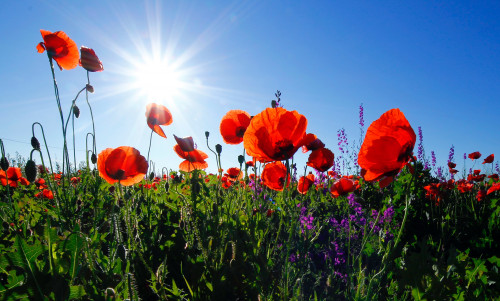A research article recently published in the British Ecological Society’s Functional Ecology journal, examines how the quantity of floral resources affects pollinator activity and how this relates to the structure and robustness of pollination networks. The paper titled “Patterns of pollination interactions at community-level are related to the type and quantity of floral resources” focuses on the relationship between the quantity of floral resources and the number of flower visits at community-level, with taking into account the descriptors of the structure and robustness of pollination networks as well.
The authors of the paper measure three types of floral resources, namely the volume of nectar, the number of pollen grains and the number of flowers. They carried out their field sampling in 4 independent grasslands in the Euganean Hills, North-East Italy, where there is a warm-rainy climate. In each grassland, the researchers placed 10 permanent sampling plots of 2 m by 2 m using a stratified random sampling design. In each plot, they recorded the presence of entomophilous plants and the number of flowers per plant species once every fifteen days, from 1st April to 30th September in 2016 (twelve survey dates in total). Using these plots in a species-rich semi-natural grassland as model ecosystems, the research team explores the relationship between floral resources and pollination networks, and discovers that there is a statistically significant dependence between nectar volume and interactions within the pollination networks at the intermediate level. They find out that intermediate levels of nectar volume specialist species interact with generalist species more than at low and high levels of nectar volume.
In the studied species-rich grassland ecosystem, pollinator visitation rates displayed a hump shaped relationship with the community-level quantity of floral resources which suggests that floral resources may attract more pollinators up to a certain threshold, after which the visitation rate may decrease as the pool of available pollinators may be saturated. Results also imply that by using specific types of floral resources it is possible to reveal ecological processes that would be masked by using the number of flowers as the sole measure of floral resource.
These results provide insight into the means of ensuring a biodiversity-friendly farming paradigm. They are relevant to the adoption of biodiversity-friendly measures in agriculture in terms of provision of the variety of floral resources for both wild and managed pollinators.
You can read the full paper here.
Photo: Flowers. Credit: Corina Ardeleanu from unsplash.com.
